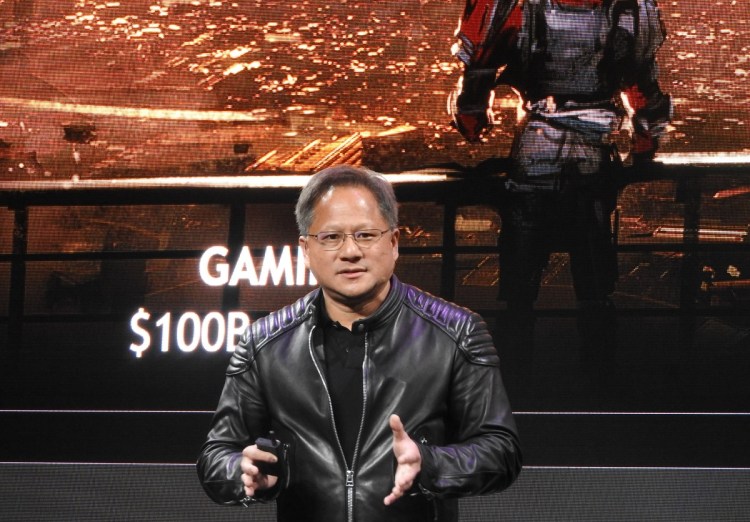Watch all the Transform 2020 sessions on-demand here.
Nvidia CEO Jensen Huang said today that the autonomous Uber crash in Tempe, Arizona last week would likely lead to more investment in self-driving cars, not less.
“I believe as a result of what happened last week, the amount of investment into the seriousness of [autonomous vehicles] is going to go up,” he said during a question-and-answer session with journalists at the company’s GPU Technology Conference in San Jose, California today. “Anybody who thought that they could get by without supercomputers and simulators and just vast amounts of data collection, and all those engineers dedicated to making sure that this product is as safe as possible, you and I got to believe that sensibility has completely changed.”
Huang said the crash highlighted why companies are working to develop autonomous vehicles: to reduce automotive accidents that harm people and damage property. Nvidia is working with 370 companies, including Uber, that are developing autonomous vehicles in some way.
Nvidia is also working on self-driving cars of its own, since some of its customers want the hardware maker to provide all the components necessary for them to create an autonomous vehicle. Nvidia stopped operating those cars in North America following the Uber crash, as did the transportation company. Huang said Nvidia wants to learn whatever it can from the incident and see if it needs to modify its cars.
June 5th: The AI Audit in NYC
Join us next week in NYC to engage with top executive leaders, delving into strategies for auditing AI models to ensure fairness, optimal performance, and ethical compliance across diverse organizations. Secure your attendance for this exclusive invite-only event.
“We should, as good engineers, simply wait to see if we can learn something from that experience,” Huang said. “We don’t know of anything that we would do different, but we should give ourselves the opportunity to learn from that incident.”
As for the crash itself, Huang said he will withhold judgment until after the investigation into the accident.
“We don’t know what happened, and we’ve got to give them a chance to go and understand for themselves,” he said. “But clearly, and surely, we must know that all the engineers there, the people at Uber, care deeply about what happened.”
Even though the causes and consequences of Uber’s accident are unclear, Huang remains a believer in the overall idea of autonomous vehicles and said people should still expect to see them on the road in some capacity. All the electric cars he knows of will have some autonomous capability by 2020, he told the audience.
His comments came as Nvidia announced its Drive Constellation platform, which allows for testing of autonomous cars in virtual reality. The idea is to provide an environment for companies to train the software for autonomous vehicles without risking people’s lives. Drive Constellation is also supposed to help car makers test vehicles in rare conditions, like extreme lighting.
However, it’s hard to tell if testing self-driving car software in a simulator like Drive Constellation will be an effective replacement for actually putting cars in those real-life situations.


